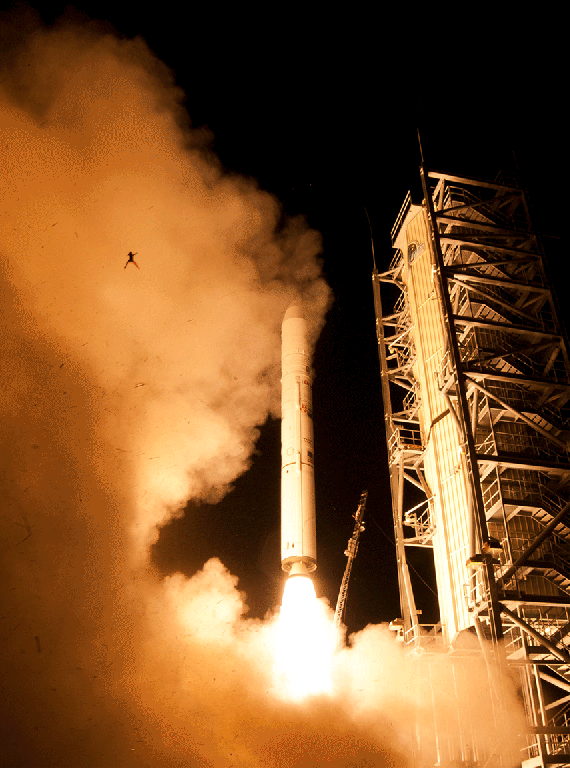Most of us watched the LADEE craft launch last Friday through an Internet live stream, wishing we could be closer to the action. This frog got arguably too close to that action since it managed to get itself between the launch and a camera. It’s already Internet-famous, but also probably dead. Still. Heck of a way to go out.
I’m currently trying to figure out the likelihood that the frog is alive. It’s not impossible since it’s clearly pretty far from the launch. The Orbital Sciences Minotaur V rocket that launched LADEE into space is 80 feet tall. Using advanced photo analysis (I cut and pasted the frog a few times next to the rocket) if the frog were next to the rocket in the image it would be just under seven feet tall.
That would be one big frog.
We saw the image on NASA’s Instagram account, where they also give some details on the relationship between the Goddard Flight Center and local wildlife:
The description reads:
A still camera on a sound trigger captured this intriguing photo of an airborne frog as NASA’s LADEE spacecraft lifts off from Pad 0B at Wallops Flight Facility in Virginia. The photo team confirms the frog is real and was captured in a single frame by one of the remote cameras used to photograph the launch. The condition of the frog, however, is uncertain. Wallops Island National Wildlife Refuge was created on July 10, 1975 and is comprised mainly of salt marsh and woodlands. The wildlife refuge contains habitat for a variety of species, including upland- and wetland-dependent migratory birds. Additionally, the U.S. Fish and Wildlife Service has an agreement with NASA to use the NASA-owned portion of Wallops Island for research and management of declining wildlife in special need of protection. The agreement with NASA covers approximately 3,000 acres of Wallops Island proper and is primarily salt marsh. But how is it possible for wildlife to peacefully coexist with space operations and what effects do rocket launches have on wildlife? NASA’s launch facilities, roads, and facilities take up a small percentage of the area. The rest of the area remains undeveloped and provides excellent habitat for wildlife. During launches, short term disturbance occurs in the immediate vicinity of the launch pads, but the disturbance is short-lived allowing space launches and a wildlife habitat to coexist. Credit: NASA Wallops Flight Facility/Chris Perry #frog #nasafrog #photobomb #launch #nasa#ladee #wallops
Extensive research (one Google search for “average frog size”) says an adult common frog measures between 2.4 and 3.5 inches. Let’s take the average and call it 3 inches. This is obviously assuming it’s a common frog, and not some other type of frog, but we admittedly don’t have a lot to go on.
We assume the frog is further from the rocket than the photo makes it seem, but even so, it seems pretty high up in the air, so it’s not looking great for the frog’s chances.
If you’re worried about the frog and want this story to end well, here’s a GIF we saw of the frog parachuting to safety:

(via NASA on Instagram, image via NASA)
- Scientists tricked female frogs into responding to mating calls from robots
- These toads grow mustache spikes to fight each other
- Some really tiny frogs were discovered last year








Published: Sep 12, 2013 02:59 pm